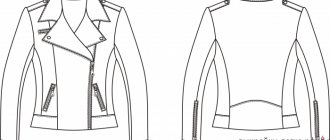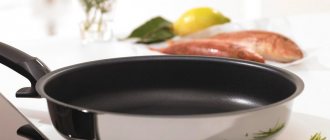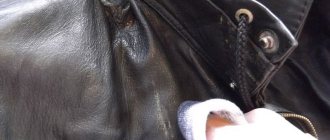Skiing is no less enjoyable than skating and rollerblading. But ski equipment requires constant care and lubrication with special compounds. After all, even professionals often have to deal with improper gliding on the snow, when the skis begin to slide (give) back. The reason is the incorrect selection of lubricants. When choosing, winter ski lovers should take into account the quality of the snow (weather conditions, outside air temperature) and know how to properly lubricate their skis, which ointments will be most suitable taking into account the outside temperature.
Why polish inventory?
Let's start with why to do this. Beginner skiers sometimes come to the conclusion that such a procedure is unnecessary. And this is their mistake. Here are a few reasons why this is the right thing to do:
- When the ski and snow surfaces come into contact, a frictional force occurs. The run can be easy or difficult. The quality of the equipment and the condition of the snow cover play a role in this. Lubrication is necessary for smooth gliding.
- The ointment prevents the equipment from slipping back when pushing off. A special product allows it to adhere well to snow.
- It is the regular use of lubricants that will allow the ammunition to remain in working condition for a long time.
Where to lubricate
The holding ointment is applied to the place that is adjacent to the track during the push - on the block. This is a section on the running surface of the ski, it starts under the heel and ends approximately 15-25 cm above the binding.
A lubricant for increasing speed - paraffin - is distributed to the ends, that is, to the sliding surface, with the exception of the pad. This is already sports training, absolutely not necessary if we are talking about plastic / semi-plastic equipment and recreational skating. Wooden skis will most likely have to be treated with paraffin, but today well-known manufacturers, for example, Swix, produce “lazy” options that are applied without an iron.
Advice If you are aimed at amateur but fast skiing and choose plastic skis, take smooth ones, without notches and always made of high-molecular material - these are more expensive, but they also glide faster.
In addition to paraffin, which homogenizes the structure of the wooden sole of skis and protects against scratching fractions of ice and snow, accelerators are used in sports, which consist almost entirely of fluorocarbon and significantly increase the sliding speed - such materials are applied to the ends of the projectile.
What equipment does not need to be lubricated?
Competent specialists do not place special emphasis on the fact that the rules of care must be strictly followed. Their opinion is that everyone chooses how to care for their equipment. If the hobby is serious, a person will use wash-off products to ensure that the ride is perfectly smooth and enjoyable. If the equipment is taken for a short time, it is not necessary to rub it. In addition, the plastic surface, for example, has the property of natural sliding.
Ski care
To ensure that your skis serve you for a long time, follow these rules:
- After each ski trip, clean the sliding surface and dry it;
- Regularly inspect your skis for nicks - while they are small, they are easier to remove with fine sandpaper;
- At the end of the season, clean your skis of grease. If possible, it is better to treat them with special wax to prevent the surface from drying out;
- Store skis in an upright position, connected to each other with sliding surfaces inward;
- Remember that skis need to be waxed at least once a season.
How to properly lubricate skis: important tips
- The material of manufacture influences the choice of lubricants and the lubrication process itself. Plastic is unpretentious and allows you to use such equipment without proper care.
- Wooden products are afraid of moisture. If moisture penetrates inside, the base swells. The friction index increases. The going gets rough. After some time, damage is discovered.
- Alpine skis use a sliding polyethylene coating, the strength of which depends on the purpose. For ordinary equipment, extruded polyethylene is used, which glides perfectly without additional lubrication; for professional equipment, graphite is added to polyethylene for rigidity, which requires careful attention to the equipment.
If you prefer cross-country skis and want to use them for a long time, listen to the following tips.
- If you want to use lubricant less often, you should purchase samples with a notch. The level of gliding for this type will be lower. You won’t be able to ride them for a long time or quickly, but they are perfect for those who love slow, classic skiing.
- If you use candles for rubbing, it will look like an economical way of care. However, this method is not among the best. The effect of candle paraffin will quickly end. It will be erased from the surface quite quickly. A better option is to use a cheap specialized substance. Its efficiency rate is much higher.
- For those who like to drive fast, following the rules is a must. Only in this way is excellent gliding and, accordingly, ideal speed achieved.
- Equipment requires regular maintenance to remain in perfect condition. Ignoring lubrication will lead to a decrease in the quality of high-speed running. It is best to carry out lubrication every time you plan to go skiing.
- During a normal walk, careful treatment is not necessary. If there is a competition coming up, a marathon, then weather conditions are taken into account. Professional skiers take this issue very seriously and select coatings according to air temperature and precipitation, since all this affects the structure of the snow cover.
- Lubricant for ski sliding at home is purchased selectively. Skate or classic strokes require the use of different lubricants.
- When buying plastic samples, you need to keep in mind that to preserve the product, they are pre-waxed. But the applied layer is unacceptable for driving. Accordingly, it is removed and new layers are applied.
Skis for skating and classic skiing
The skating option involves fast movement on the snow, so it is recommended to treat the equipment with ointments and paraffins to achieve comfortable gliding. You need to rub the soles of your skis, regardless of the stroke (classic, skating), as follows:
- Preheat the iron according to the temperature indicated on the package.
- Make notches on the block and add a few drops of paraffin.
- Run an iron over the surface of the ski from heel to toe until a uniform shine appears.
- Remove excess compound with a scraper.
- Carry out polishing as the first layer hardens.
The classic move involves sliding comfortably forward and holding back. To prevent kickback, it is worth purchasing a holding compound that treats the pads under the boot and forward by 30-35 cm.
The cleansing process must be carried out up to the heel of the shoe:
- Apply solid holding compound under the block.
- Treat the sliding area with paraffin.
- Walk over the surface with an iron.
- Wait a couple of minutes.
- Go over with fine sandpaper.
- Rub with synthetic (silicone) formwork.
It is better to make 2-3 thin layers, melting each one separately with an iron, so that a one-time treatment of the skis will be enough for about 50 km along the way.
The choice depends on the temperature
Once again, pay attention to such an important aspect as the influence of weather conditions.
If you want to go for a ride, check the thermometer outside the window. The moisture content of the snow cover also plays an important role in the selection and application of the composition if it is necessary to achieve even, smooth gliding. But these parameters are more difficult to find out. The first step involves thorough cleaning, followed by surface treatment. The final step is to apply a holder ointment to the block, securing the previous layer. It is the last finishing layer that is selected depending on the temperature and condition of the snow. As well as the type of product. When it is relatively warm, the use of liquid lubricants is recommended. When cold - hard.
Semi-plastic models
Semi-plastic models are usually coated with plastic exclusively on the outside to protect against wear and tear inside the wood. The treatment is carried out in the same way as for plastic skis to avoid kickback.
Wood must be processed exclusively in dry, clean form. Instructions for paraffin treatment (candles, tablets):
- Place the skis on a stable, level base.
- Remove dirt with a cloth.
- Preheat the iron.
- Start processing from the edges.
- Apply 2-3 drops of wax to the iron and melt.
- Walk over the entire surface, performing smooth movements back and forth, lightly pressing against the bottom of the skis.
- Wait for the wax layer to harden.
- Go through the scraper.
- Take your gear out into the cold.
Variety of coatings
First you need to understand that processed products are divided into conventional, low-fluoride and high-fluoride.
To use regular ointment, make sure the ambient humidity is no more than 55%. If the humidity parameters are higher, other products with a high fluoride content are used. Fluoride-containing products are more expensive, but better in quality. A similar composition applied to skis gives them the opportunity to gain better glide.
However, there are also disadvantages. Rubbing is sometimes carried out with a lubricating iron. This is a special device. There is one for lubricants, another for paraffin. Sometimes the rubbing process increases the temperature. Then, harmful substances may be released from the ointment, which contains fluoride. Use caution and care when using a respirator. If there is no protective device, use a well-ventilated area for work.
Lubrication
It belongs to the “lazy” type, which does not require long application time and effort.
Presented in the following forms: aerosol, emulsion, paste and cream. The negative point is the relatively short driving distance over which the composition operates. After walking 6-10 kilometers, you will have to re-process the sports equipment. Considering this factor, amateur skiers do not waste extra time, for which they lubricate their skis immediately before the start, taking the ointment with them. The mixture sets quickly, literally in 2 minutes.
Paraffin
This product is considered to be of higher quality.
Having a solid shape, it creates durable protection for the surface of the equipment and lasts much longer. There are several varieties. It is known to be fluorine-free, low-fluoride and high-fluoride. According to the markings they are designated as CH, LF and HF. The choice of the type of paraffin product is known to be influenced by air humidity. The higher its level, the greater the percentage of the substance in the lubricant. More often it is sufficient to use the CH and LF markings. High fluoride (HF) additive is applied as desired in appropriate weather conditions.
For paraffin, it is important to comply with a certain outdoor temperature. They sell it as a set, which includes several varieties. Each type has a specific temperature range.
How can you lubricate skis at home?
In stores and other points of sale you can find many different products designed for ski fans. If a person does not plan to engage in it seriously, then there will be no need to spend money on expensive formulations presented in the form of aerosols or branded paraffins. For those who are interested in how to lubricate their skis for better glide, a wide range of different ointments are offered.
Such products are presented in two types: for better glide and grip. Beginning athletes can use universal kits from well-known brands: Visti, Swix or Briko. All products are color coded according to the temperature at which they must be used. If the temperature is above zero, then liquid formulations are used. For negative values, the following classification applies:
- 0 to -2 – purple color;
- -2 to -8 – blue;
- -5 to -12 – light green;
- -10 to -25 – dark green;
- -15 to -30 – black.
When figuring out how to lubricate skis, you need to pay attention to common paraffins, which, according to their properties, are divided into options for sliding and securing. It is worth knowing how to lubricate your skis so that the snow does not stick in the absence of other means, you can use wax and paraffin from candles, but medical grade is better. There is a widespread belief among people that you can use soap, but in reality it will not do any good.
How to wax cross-country skis for a beginner
Firstly, the very use of the ointment, as already reported, does not allow a rollback and allows easy movement.
This is important for running models. The run should be free, so that nothing makes the move heavier. Secondly, compositions are divided into two types - sliding and holding. Given these definitions, you can understand how to carry out the process. The first type of ointment represents the first applied layer, which gives the lower ski part the property of free sliding. The holding type is applied last. It can be called a binder. The lubricant adheres firmly to the surface.
Plastic products are used as cross-country skis. Here the coating will also come in handy. And before applying it, carefully go over the treatment areas with thin sandpaper. Paraffin coating with an iron is more reliable.
Using paraffins for plastic skis
There are some valuable tips for beginners who do not know how to choose the right wax for skis made of plastic.
- for plastic skis it is recommended to use paraffin compounds,
- For skating equipment, only paraffins are used, because when riding, the side edges usually collide,
- For long distances, it is better to take holding ointment with you. It wears off the ski very quickly, so it needs frequent updating,
- The low fluoride composition MVIS Marathon has proven itself well. The composition is easy to apply and lasts a long time.
Experienced skiers claim that for a temperature of -7°C, an ointment for -5°C may be suitable.
How to remove old product
It is not difficult to remove the previous layer at home. This procedure should be done constantly before applying a new composition. Cleaning takes place in different ways.
- After liquid or aerosol lubricants, it is convenient to use a remover. Spray a soft cloth and rub it over the surface to be cleaned.
- For solid paraffin, there is a mechanical removal method. A plastic scraper and a brass brush will come in handy - the first cleans plaque, the second eliminates residues.
Why do you need ski wax?
This is a general concept that is used for special ski care products. They provide ease of use as well as optimal speed while riding. Ski ointments protect sports equipment from the negative effects of external factors, primarily weather.
Products include:
● gels;
● powders;
● paraffins with different levels of hardness;
● pastes, as well as sprays, etc.
All preparations for treating skis perform two main functions - reducing friction on the ski surface while riding, as well as effective traction on ice and snow surfaces. Ski ointment will definitely be needed by owners of traditional plastic structures, which are characterized by a smooth surface. Without the use of these compounds, the ride will not be comfortable.
Manufacturers divide products into two categories:
● means for holding;
● gliding agent.
The first type is used by amateur and professional skiers for running and classic skiing. They reduce the user's speed if they are moving backwards and also make it easier to climb a snowy slope.
Ski glide compounds help improve acceleration as well as maneuverability of the winter device. They are necessarily used for running and mountain models of sports equipment. Such products will be required in situations where the ski owner plans to ski as quickly and comfortably as possible.
The first skiing is often accompanied by a classic ride, so winter equipment is first prepared using a grip composition.
How to apply holding ointment correctly
Its area of action is the area where the boot is secured and 20-35 centimeters around.
This distance may vary. This is influenced by the person’s weight and height, the size of his feet and the length of the skis themselves. There is a preliminary inspection stage, the purpose of which is to find out whether the notch and groove are present. The first detail allows you to avoid using lubrication when walking lightly with normal equipment. In other cases, processing is necessary. The groove is not filled with composition. It remains empty and does not allow the feet to move apart, allowing them to move smoothly and succumb to the chosen direction.
Paraffin lubricant (hot)
Lubrication is done on a flat surface (kitchen table or floor). The ski is placed on it with the sliding surface facing up and then we melt the lubricant on the iron and drip the “sliding” with the melted lubricant. As a result, a kind of chain of paraffin drops is formed, with a pitch of approximately 3 - 5 cm. Paraffin should melt slowly and not smoke, and in no case should it crackle when melted. Next, iron the sliding surface of the skis so that the paraffin has time to melt and completely cover the entire surface, but try to avoid overheating.
All excess paraffin should be carefully scraped off with a knife or ruler. You can use a scraper for this purpose. All paraffin is scraped off. And at the final stage, rub the remaining layer of lubricant using a plug. At the end of the rubbing procedure, the sliding surface of the skis will become glossy, similar to a mirror.
How to handle sports equipment
There are several conditions that you need to pay attention to before lubricating your new skis. First, a clean and dry surface is required, and preparation must be carried out in a warm room. Next, a few more points are taken into account.
- The solid mixture is applied several times, spreading and carefully peeling off to a thin layer. The lubricant is allowed to set. Then they process it one last time, in the open air.
- You can test your equipment by going on a short hike of a couple of kilometers.
- If you plan to do classic skating, it is better to use sliding compounds. In this case, they are applied in the area of the front or rear ski part. Only the central area is processed with holding varieties.
- The paraffin mixture is applied dropwise. It is dissolved above the surface, leveling with an iron. After cooling, remove with a scraper and treat with a nylon brush.
Notched
If there is one, the material does not need to be lubricated, but such a part may wear off over time, and you will have to use paraffin.
Semi-plastic
The products are made from wood and a polymer (plastic) protective plate attached to the sliding part. In terms of operating conditions, this model is similar to the plastic one, so the maintenance rules are the same.
Wooden
Models made of wood require lubrication. Proper ski lubrication considers working with solid products. Along with paraffin, wax is also suitable. To make priming more convenient, take a tablet candle and use an iron to level it. Wax has its own instructions:
- The equipment is placed on a stable surface, leaving the underside exposed. Use a rag to remove dirt. Remove the old coating.
- The iron is heated and placed above the material at a height of 2.5 cm. Wax is applied to the iron. When the applied composition begins to melt and drip, it is carefully distributed over the plane. The procedure for deleting processing is similar to those described above.
- Wooden skis are treated using a special brush. The entire area is covered. Movements should be progressive with slight pressure on the instrument.
- The ammunition is cooled for several hours, then it is transferred overnight to a room heated to room temperature.
Combined
There is little demand for these models. They are suitable for classic and free skating. Lubrication technology involves the use of familiar compounds: ointments, paraffin. Today's market no longer has a large assortment of such varieties of ski equipment. The choice of modern skiers is often based on a certain style: cross-country, classic, skating.
For running
The necessary lubricants for this equipment are selected according to the weather, taking into account the temperature scale. You should lubricate your skis at the last, applying up to three layers and using light, as if rubbing, movements. It takes 10-15 minutes to cool down. Having rolled, armed with a scraper and wash, remove the remains.
- When using paraffin to process cross-country skis, the lubrication technology is complex and is divided into several stages.
- First, hot cleaning is carried out. A lubricant is made with a molten liquid using an iron, trying to ensure that the liquid composition does not have time to harden.
- The wax that has not yet cooled down is cleaned off with a scraper and a stiff brush, leaving a final layer 1 mm thick.
- Based on the weather, reapply and remove the special paraffin product in the same way as during the preparatory treatment.
- The equipment will cool down within half an hour.
- Use a nylon brush or a regular scraper to remove the remaining paraffin applied.
- The surface should become smooth and shiny.
For a classic move
A habitual walk without acceleration, without any techniques, involves the use of standard ointments.
- The area of the same name is coated with a mixture with a sliding function. The second composition goes to the block. To make it clearer, this is the name given to the area located in the middle of the skis, where the boot is attached.
- The lubrication process is standard. The choice of funds depends entirely on weather conditions. In cold weather it is convenient to use a rubbing stopper when applying a hard finish.
- It is important to remember that you cannot mix two types of ointments.
- Re-lubrication is done after the previous layer has set.
A nylon brush polishes the surface.
For skating
Here they use a less complex system of care.
It is enough to use a slip coating. You need to lubricate your skis at home several times. If you already have professional experience in skiing, one application of ointment selected according to temperature, directly at the place where you are going to start, will probably be enough for you. For less experienced skiers, the best option is the familiar paraffin treatment using all known products.
Basic rules for lubricating plastic skis
Solid texture ointments are applied in several layers. Each layer must be rubbed thoroughly. After application, the surface must be cooled, and the last layer can be applied directly outside.
It is recommended to test the wax before riding. If the product is not suitable and its validity period is short, it should be replaced.
For classic and skating style, paraffin is applied to the back or front. The central part can be lubricated with holding agents.
Paraffin is applied in drops and smoothed with an iron. After application, it must be cooled and removed with a scraper. The final stage is surface treatment with a nylon brush.
A ski with a notch does not need to be lubricated, but if it wears off, it is still recommended to apply paraffin.
What do you put on your skis to make them glide better?
For a classic style, the front and back of the ski are lubricated with slip wax. And the center of the ski is lubricated with holding ointment to reduce recoil.
Interesting materials:
What to do if the printer jams paper? What to do if a decision has been received to initiate enforcement proceedings? What to do if an error occurs? What to do if you spilled beer on your laptop? What to do if you spilled water on your laptop keyboard? What to do if you spill water on the carpet? What to do if the sound on your PC disappears? What to do if the layers tab in Photoshop disappears? What to do if channels on tricolor TV are missing? What to do if the processor heats up to 100 degrees?
Features of impurities of paraffin lubricants
Among the large number of impurities and elements of wax lubricants, the most famous are lubricants containing hydrocarbon elements or the presence of fluorine.
Waxes with hydrocarbons
Hydrocarbon waxes are more common than others. They have excellent water-repellent properties, and are also quite simple to use (hot and dry method).
Among this type of lubricants, there are universal and temperature-oriented lubricants.
This universal type of wax is an inexpensive and easy-to-use option for any category of winter sports enthusiast. These lubricants work great for long walks, but are completely unsuitable for competition riding.
Hydrocarbon lubricants have excellent water-repellent properties
They have the following advantages:
- easy sliding due to excellent water-repellent ability;
- protection from dirt.
One should not forget about the downside - such a coating is quickly erased from the surface of the equipment, and therefore, it must be reapplied often.
As for temperature-oriented waxes, they are used by professionals in certain temperature situations. This lubricant contains special substances that work at specific temperatures and provide good gliding.
There is the following classification of such substances:
- cold. It is necessary to smear at snow temperatures of −12 and below;
- average. It is necessary to smear at a temperature from −12 to −3;
- warm. It is necessary to smear at a temperature of −2 and above.
Fluorocarbon waxes
Fluorocarbon waxes have remarkable water-repellent properties, which gives the best gliding on snow.
There are several types of such waxes:
- low fluoride—use at snow moisture levels less than 60%;
- medium fluoride - from 60 to 80%;
- high fluoride - more than 80%.
Fluorocarbon substances are more expensive than waxes, which mainly contain paraffin. Such a lubricant is considered a higher quality choice; it should be smeared less frequently and can be fairly easily distributed evenly over the surface of the equipment.
The skis don't go well. What is the reason?
For beginners who are just learning the intricacies of handling ointments, situations are typical when everything seems to be done correctly, but the skis give a bad roll. This goes away with experience, but at first such problems cause a lot of headaches. Let's look at the most typical situations and their causes.
The skis slip backwards during the push. Reason #1: the holding ointment does not correspond to the temperature range; in the language of experienced skiers, this is called “not getting into the ointment.” Reason No. 2: the pad area is not processed along its entire length.
The skis don't glide well. Reason No. 1: the sliding lubricant was not selected for the weather. Reason #2: the holding ointment is applied outside the pad.
Snow and icing form on your skis. Reason No. 1: the pad area was treated with too “warm” ointment. Reason #2: Too thin a layer of lubricant has been applied.
Removing wax from skis or snowboards
Re-waxing is required when your winter riding gear begins to slip unsatisfactorily. In this case, you need to free it from the old layer of paraffin.
Place the ski or board in a special mounting machine. Move the scraper from toe to heel. Use a stiff brush to remove any remaining residue. You can also use a special solvent to remove old grease.
You can use a hot method, which can clean all layers of lubricant, as well as dirt. Take an iron, apply paraffin and immediately remove the resulting mass with a scraper.











